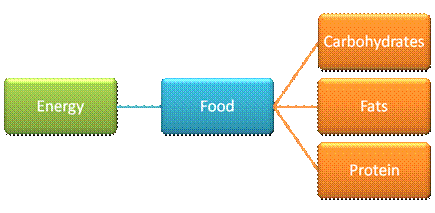Energy introduction
Every cell within our body requires energy to function and sustain life even when we are asleep. This energy is provided by the food that we eat, and the more physically active we are the more energy we require. When we start exercising the body is required to produce energy at a faster rate than it does at rest. The energy used for muscle contraction (movement) comes from carbohydrates, fats and protein although proteins are only used when the others are not available and as a last resort.
Carbohydrate
Carbohydrates are the body's preferred energy source; examples include bread, pasta, rice, potatoes and honey. It is stored in our muscles and liver cells in the form of glycogen. Glycogen is broken down into glucose, which can be used by all tissues in the body. I gram of carbohydrate provides 4kcals of energy.
Fat
Fat is stored beneath the skin (adipose tissue) and around other internal organs in the body where it serves not only as a fuel store but also as insulation and protection of vital organs. Fats are broken down into fatty acids and triglycerides. Fatty acids are stored as adipose (fat) tissue and triglycerides are stored in the muscles. Common food sources of fat include butter, cheese, corn oil, oily fish and fat in meat. 1 gram of fat provides 9kcals of energy.
Protein
Protein is used for the growth and repair of body tissues. It is made up of amino acids, often referred to as the building blocks of all body cells. It is not stored in the body in the same way as fat and carbohydrate and where there is an excess of protein some will be converted to fat and stored and the rest excreted. Protein can be used to provide energy, however, this only occurs under conditions of prolonged starvation or exercise such as long distance running or cycling events. Common sources of protein include eggs, meat, and fish. 1 gram of protein provides 4kcals of energy.
